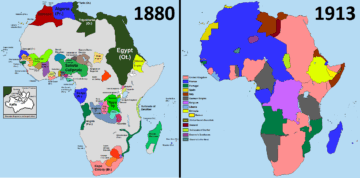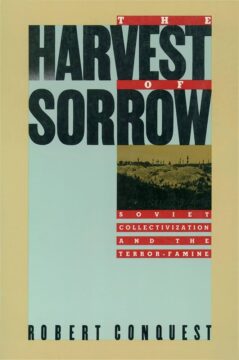Enjoying the content on 3QD? Help keep us going by donating now.
Category: Recommended Reading
Ezra Klein: Why American Jews No Longer Understand One Another
Ezra Klein in the New York Times:
 Zohran Mamdani’s triumph in New York City’s Democratic primary for mayor has forced, among many Jews, a reckoning with how far they have drifted from one another. Mamdani does not use the slogan “globalize the intifada,” but he does not condemn those who do. He has said that if he were mayor, Benjamin Netanyahu, the prime minister of Israel, would face arrest on war crimes charges if he set foot in New York City. Israel has a right to exist, he says, but “as a state with equal rights.”
Zohran Mamdani’s triumph in New York City’s Democratic primary for mayor has forced, among many Jews, a reckoning with how far they have drifted from one another. Mamdani does not use the slogan “globalize the intifada,” but he does not condemn those who do. He has said that if he were mayor, Benjamin Netanyahu, the prime minister of Israel, would face arrest on war crimes charges if he set foot in New York City. Israel has a right to exist, he says, but “as a state with equal rights.”
Many older Jews I know are shocked and scared by Mamdani’s victory. Israel, to them, is the world’s only reliable refuge for the Jewish people. They see opposition to Israel as a cloak for antisemitism. They believe that if the United States abandons Israel then Israel will, sooner or later, cease to exist. To them, Mamdani is a harbinger. If he can win in New York City — a city with more Jews than any save Tel Aviv — then nowhere is safe.
Many younger Jews I know voted for Mamdani. They are not afraid of him. What they fear is a future in which Israel is an apartheid state ruling over ruins in Gaza and Bantustans in the West Bank.
More here.
Enjoying the content on 3QD? Help keep us going by donating now.
How Ozzy Osbourne & Black Sabbath’s Live Shows Defined A Genre
Enjoying the content on 3QD? Help keep us going by donating now.
The Surprising Durability Of Africa’s Colonial Borders
Alden Young at Noema Magazine:
 The great surprise of the first quarter of the 21st century has been the endurance of Africa’s colonial borders. The durability of Africa’s multiethnic states, most of which project power unevenly over vast territories and possess relatively small militaries, has everything to do with their tradition of multilateralism, a tradition born out of the social networks of anticolonial struggle and the Pan-African Congresses of the first half of the 20th century. Rather than a continent where “war made the state and the state made war,” one might say conferences made the state and the state held conferences.
The great surprise of the first quarter of the 21st century has been the endurance of Africa’s colonial borders. The durability of Africa’s multiethnic states, most of which project power unevenly over vast territories and possess relatively small militaries, has everything to do with their tradition of multilateralism, a tradition born out of the social networks of anticolonial struggle and the Pan-African Congresses of the first half of the 20th century. Rather than a continent where “war made the state and the state made war,” one might say conferences made the state and the state held conferences.
This is not to say that 20th-century African history was peaceful. Mazrui reminds us that by 1993, nearly 2 million Africans had lost their lives defending the borders inherited from colonial regimes. Since then, millions more have died. Yet the borders have held.
Even when contemporary African borders have been modified, as in the case of Eritrea’s separation from Ethiopia or South Sudan’s independence from Sudan, much of the contestation has revolved around the accurate demarcation of colonial borders rather than primordial claims about ethnic or communal homelands.
more here.
Enjoying the content on 3QD? Help keep us going by donating now.
Remembering Historian, Poet Robert Conquest On His 108th Birthday
Cynthia Haven at The Book Haven:
 Robert Conquest is a man of contradictions: He has been called “a comic poet of genius” and “a love poet of considerable force” – but he made his mark as one of the first to expose the horrors of Stalinist communism.
Robert Conquest is a man of contradictions: He has been called “a comic poet of genius” and “a love poet of considerable force” – but he made his mark as one of the first to expose the horrors of Stalinist communism.
Susan Sontag was a visiting star at Stanford in the 1990s. But when she was introduced to Robert Conquest, the constellations tilted fora moment. “You’re my hero!” she announced as she flung her arms around the elderly poet and acclaimed historian. It was a few years since she had called communism “fascism with a human face” – and Conquest, author of The Great Terror, a record of Stalin’s purges in the 1930s, had apparently been part
of her political earthquake.
Sitting in his Stanford campus home last week and chatting over a cup of tea, the 93-year-old insisted it’s all true: “I promise.We had witnesses.” His wife, Liddie, sitting nearby confirmed the account, laughing. Robert Conquest published his seventh collection of poems last year and a book of limericks this year, finished a 200-line poetic summa and is working on his memoirs.
more here.
Enjoying the content on 3QD? Help keep us going by donating now.
Thursday Poem
Why I Like Marriage
At breakfast I tell my wife
To bury me in my new suit.
“The gray one?” she asks,
“Yes, with the pinstripes,”
“Fine,” and she sips her tea.
And say, “I know,” and mean it.
by George Ovitt
from Rattle Magazine
spring 2014
Winning Is EVERYTHING, Right?
Enjoying the content on 3QD? Help keep us going by donating now.
Stem cell transplant without toxic preparation successfully treats genetic disease
From Medical Express:
 An antibody treatment developed at Stanford Medicine successfully prepared patients for stem cell transplants without toxic busulfan chemotherapy or radiation, a Phase I clinical trial has shown.
An antibody treatment developed at Stanford Medicine successfully prepared patients for stem cell transplants without toxic busulfan chemotherapy or radiation, a Phase I clinical trial has shown.
Their work focused on CD117, which regulates the cells’ growth and development. They found that an antibody against CD117 blocked the stem cells’ growth and eliminated the cells from mice without the hazards of radiation and chemo. Together with other Stanford scientists, they subsequently identified the clinical antibody equivalent that was used in this new clinical trial. This clinical trial also addressed a second challenge in stem cell transplants: In the past, about 35% to 40% of patients who needed the transplants for any reason did not receive them because they lacked fully matched donors. But researchers found a way to increase the chance that the transplants would work by modifying the donated bone marrow before giving it to the participants.
More here.
Enjoying the content on 3QD? Help keep us going by donating now.
Wednesday, July 23, 2025
The 800-Year-Old Mystery of a Lost Medieval Legend Is Solved
Becky Ferreira at 404 Media:
 A major mystery about a long-lost legend that was all the rage in Medieval England but survives in only one known fragment has been solved, according to a study published on Tuesday in The Review of English Studies.
A major mystery about a long-lost legend that was all the rage in Medieval England but survives in only one known fragment has been solved, according to a study published on Tuesday in The Review of English Studies.
Roughly 800 years ago, a legend known today as the Song of Wade was a blockbuster hit for English audiences. Mentions of the heroic character showed up in the works of Geoffrey Chaucer, for example. But the tale vanished from the literature centuries later, puzzling generations of scholars who have tried to track down its origin and intent.
Now, for the first time, researchers say they’ve deciphered its true meaning—which flies in the face of the existing interpretation.
More here.
Enjoying the content on 3QD? Help keep us going by donating now.
How to avoid nuclear war in an era of AI and misinformation
Alexandra Witze in Nature:
 The Doomsday Clock — a symbolic arbiter of how close humanity is to annihilating itself — now sits at 89 seconds to midnight, nearer than it has ever been to signalling our species’ point of no return.
The Doomsday Clock — a symbolic arbiter of how close humanity is to annihilating itself — now sits at 89 seconds to midnight, nearer than it has ever been to signalling our species’ point of no return.
Many threats, including climate change and biological weapons, prompted global-security specialists at the Bulletin of the Atomic Scientists in Chicago, Illinois, to move the clock’s hands in January. But chief among those hazards is the growing — and often overlooked — risk of nuclear war.
“The message we keep hearing is that the nuclear risk is over, that that’s an old risk from the cold war,” says Daniel Holz, a physicist at the University of Chicago, who advised on the Doomsday Clock decision. “But when you talk to experts, you get the opposite message — that actually the nuclear risk is very high, and it’s increasing.”
From Russia’s grinding war in Ukraine and the simmering tensions between India and Pakistan that flared in May, to the US and Israeli attacks on Iranian nuclear facilities in June, the world is not short of conflicts involving one or more nuclear-armed nations.
More here.
Enjoying the content on 3QD? Help keep us going by donating now.
The Case Against Writing with AI — Ezra Klein
Enjoying the content on 3QD? Help keep us going by donating now.
Neither Mamdani nor Bernie is a Democratic Socialist
Pranab Bardhan at his own Substack:
 Zorhan Mamdani, the presumed front-runner in the New York mayoral race, calls himself a democratic socialist (which scares Wall Street). So did US senator Bernie Sanders in his earlier election campaigns. Historically, a socialist is usually associated with advocacy of ownership or control of means of production primarily resting with the state or other non-private entities (like cooperatives or worker-owned enterprises). I have not heard either Mamdani or Sanders being associated with the advocacy of any such transformation of most of the means of production in the US. I think they are simply European-style social democrats, who would keep the mode of production essentially capitalist (with some possible light modifications) but with a somewhat greater role of the state in education, health and other welfare services (which, of course, may require higher taxes on the rich).
Zorhan Mamdani, the presumed front-runner in the New York mayoral race, calls himself a democratic socialist (which scares Wall Street). So did US senator Bernie Sanders in his earlier election campaigns. Historically, a socialist is usually associated with advocacy of ownership or control of means of production primarily resting with the state or other non-private entities (like cooperatives or worker-owned enterprises). I have not heard either Mamdani or Sanders being associated with the advocacy of any such transformation of most of the means of production in the US. I think they are simply European-style social democrats, who would keep the mode of production essentially capitalist (with some possible light modifications) but with a somewhat greater role of the state in education, health and other welfare services (which, of course, may require higher taxes on the rich).
More here.
Enjoying the content on 3QD? Help keep us going by donating now.
In Conversation: Takashi Murakami
Enjoying the content on 3QD? Help keep us going by donating now.
Marie NDiaye: The Art of Fiction
Madeline Schwartz in The Paris Review:
 Marie NDiaye’s books are often violent, but the violence takes highly particular forms. A person might find herself suddenly called a different name by everyone around her, like Fanny in Among Family (1990, translation 1997), or pregnant with a strange creature, as does Nadia in My Heart Hemmed In (2007, 2017). A lawyer might try to comprehend an act of infanticide; a woman working in a hotel might find herself in a sexual relationship with her boss, who has their encounters filmed. The shocking nature of such scenarios is offset by NDiaye’s prose, precise and formal, with a restraint that adds to her work’s unnerving quality: a placidity where one might expect horror. Claire Denis, with whom NDiaye wrote the screenplay for the film White Material (2009), has described her work as “unbearably sweet.”
Marie NDiaye’s books are often violent, but the violence takes highly particular forms. A person might find herself suddenly called a different name by everyone around her, like Fanny in Among Family (1990, translation 1997), or pregnant with a strange creature, as does Nadia in My Heart Hemmed In (2007, 2017). A lawyer might try to comprehend an act of infanticide; a woman working in a hotel might find herself in a sexual relationship with her boss, who has their encounters filmed. The shocking nature of such scenarios is offset by NDiaye’s prose, precise and formal, with a restraint that adds to her work’s unnerving quality: a placidity where one might expect horror. Claire Denis, with whom NDiaye wrote the screenplay for the film White Material (2009), has described her work as “unbearably sweet.”
In person, NDiaye is warm and gracious. She likes talking about babies, dinner parties, her friends’ books; she often wanted to know what I was reading, and to discuss movies she enjoyed, like Anatomy of a Fall and Mulholland Drive.
More here.
Enjoying the content on 3QD? Help keep us going by donating now.
The World’s Richest Woman Has Opened a Medical School
Alice Park in Time Magazine:
 On July 14, 48 students walked through the doors of the Alice L. Walton School of Medicine in Bentonville, Ark. to become its inaugural class. Some came from neighboring cities, others from urban centers in Michigan and New York. Almost all had a choice in where they could become doctors but took a chance on the new school because of its unique approach to rethinking medical education.
On July 14, 48 students walked through the doors of the Alice L. Walton School of Medicine in Bentonville, Ark. to become its inaugural class. Some came from neighboring cities, others from urban centers in Michigan and New York. Almost all had a choice in where they could become doctors but took a chance on the new school because of its unique approach to rethinking medical education.
Named after its founder—the world’s richest woman and an heir to the Walmart fortune—the school will train students over the next four years in a radically different way from the method most traditional medical schools use. And that’s the point. Instead of drilling young physicians to chase symptom after symptom and perform test after test, Alice Walton wants her school’s graduates to keep patients healthy by practicing something that most doctors today don’t prioritize: preventive medicine and whole-health principles, which involve caring for (and not just treating) the entire person and all of the factors—from their mental health to their living conditions and lifestyle choices—that contribute to wellbeing.
More here.
Enjoying the content on 3QD? Help keep us going by donating now.
Takashi Murakami In Conversation
Ed Schad interviews Takashi Murakami at The Brooklyn Rail:
 Rail: We have spoken in the past of the status that a copy has in Japan, that, for instance, it is not unusual or out of place to see a copy of a national treasure standing in for an original work in a museum. Practically, most treasures are too fragile and too old to be on continuous view, but it is also more than that, more like the copy can transmit what the original is meant to transmit. This bothers us in the West, but less so in Japan. We have also spoken of a copy as a way of both affirming and breaking from a teacher. Your idea of a person vicariously reaching back to Matabei through your work seems in this vein.
Rail: We have spoken in the past of the status that a copy has in Japan, that, for instance, it is not unusual or out of place to see a copy of a national treasure standing in for an original work in a museum. Practically, most treasures are too fragile and too old to be on continuous view, but it is also more than that, more like the copy can transmit what the original is meant to transmit. This bothers us in the West, but less so in Japan. We have also spoken of a copy as a way of both affirming and breaking from a teacher. Your idea of a person vicariously reaching back to Matabei through your work seems in this vein.
Murakami: Matabei captured all the details of people’s different jobs during a moment in the city of Kyoto, the landscape of the town, even more details than have been recorded in writing. So it really was just like I was using someone else’s genius to boost my work. It is difficult to do a copy of old works like these because so much of the original tints and paintings have rubbed off and a lot of the details are missing. If you fill in too many details or imitate too many of the missing lines, then it seems to become your own work and it has less to do with the older artist. However, two to three years ago I started to use AI to recreate those details more faithfully and get much closer to the older artist’s work. This use of AI to fill in the details of an older work made it possible later for me to work with Hiroshige’s prints when the Brooklyn Museum asked me.
more here.
Enjoying the content on 3QD? Help keep us going by donating now.
Wednesday Poem
After Babel
What moved the men of Shinar
to build with brick and slime
their storied tower?
Was it a name
that kept them unified?
And why should God
destroy this unity
scattering them one by one
across the world?
I’ve never mastered
another tongue
always wondering
what was the language that we lost
the Ur-Sprache,
the babble we once shared
and whether it reappears unwittingly
in a mother’s lulling of a child,
the dialects of love,
our gestures when another suffers pain,
the will to give.
These are the bricks
we’ve always used to build
not only towers and walls
but simple, open places where we can live and breathe
and may still do.
by Michael Jackson
from Dead Reckoning
Auckland University Press, 2006
Enjoying the content on 3QD? Help keep us going by donating now.
Mary Had Schizophrenia—Then Suddenly She Didn’t
Rachel Aviv at The New Yorker:
 Karl Jaspers, the German psychiatrist and philosopher, has described what he calls the “delusional atmosphere,” a profound alteration in the way certain people experience the world. “There is some change which envelops everything with a subtle, pervasive and strangely uncertain light,” he wrote. People in this state search for a story that explains why everything suddenly feels uncanny and ominous. The “vagueness of content must be unbearable,” he wrote. “To reach some definite idea at last is like being relieved from some enormous burden.”
Karl Jaspers, the German psychiatrist and philosopher, has described what he calls the “delusional atmosphere,” a profound alteration in the way certain people experience the world. “There is some change which envelops everything with a subtle, pervasive and strangely uncertain light,” he wrote. People in this state search for a story that explains why everything suddenly feels uncanny and ominous. The “vagueness of content must be unbearable,” he wrote. “To reach some definite idea at last is like being relieved from some enormous burden.”
Mary had landed on a story that overwrote the reality of her daughters’ lives, but they also recognized in it a kind of emotional logic. Mary had been pressured to marry Chris, in an arranged match, and, when they settled in America, he had traditional ideas about a woman’s role and restricted her freedom to pursue her career. Christine and Angie came to feel that their mother’s delusions—that her former colleagues would free her from marriage and she’d be restored to her place in the medical community—were “a way of explaining how she ended up trapped in this position,” Christine said. “We theorized that psychosis was almost a reasonable response.”
more here.
Enjoying the content on 3QD? Help keep us going by donating now.
Tuesday, July 22, 2025
How TikTok is Transforming the English Language
Adam Aleksic at Literary Hub:
 It seems as though everything happens faster on the internet. Each week brings a dizzying parade of new memes, fads, and slang words that evaporate as quickly as they materialize. It can be hard to keep up with the latest references unless you’re spending hours a day catching up on social media trends.
It seems as though everything happens faster on the internet. Each week brings a dizzying parade of new memes, fads, and slang words that evaporate as quickly as they materialize. It can be hard to keep up with the latest references unless you’re spending hours a day catching up on social media trends.
Of course, it wasn’t always like this: Look at Middle English six hundred years ago. Language was far more insular. Each city and region had its own, different dialect, to a point where there can scarcely be any discussion of a uniform “English” language as we understand it today. The only reason to adopt a new word was that it helped you better communicate with your fellow townspeople, so of course change came about more slowly.
Then England centralized, and the dialects of London and the East Midlands became the basis of what we now think of as Standard English. It was as if a switch had flipped: The upper class suddenly had a set vocabulary they could point to as “correct,” meaning that all other dialects became “incorrect.” By the 1750s, the word “slang” emerged as a catchall term to describe the nonstandard words used by the lower classes.
More here.
Enjoying the content on 3QD? Help keep us going by donating now.
How Distillation Makes AI Models Smaller and Cheaper
Amos Zeeberg in Quanta:
 The Chinese AI company DeepSeek released a chatbot earlier this year called R1, which drew a huge amount of attention. Most of it focused on the fact(opens a new tab) that a relatively small and unknown company said it had built a chatbot that rivaled the performance of those from the world’s most famous AI companies, but using a fraction of the computer power and cost. As a result, the stocks of many Western tech companies plummeted; Nvidia, which sells the chips that run leading AI models, lost more stock value in a single day(opens a new tab) than any company in history.
The Chinese AI company DeepSeek released a chatbot earlier this year called R1, which drew a huge amount of attention. Most of it focused on the fact(opens a new tab) that a relatively small and unknown company said it had built a chatbot that rivaled the performance of those from the world’s most famous AI companies, but using a fraction of the computer power and cost. As a result, the stocks of many Western tech companies plummeted; Nvidia, which sells the chips that run leading AI models, lost more stock value in a single day(opens a new tab) than any company in history.
Some of that attention involved an element of accusation. Sources alleged(opens a new tab) that DeepSeek had obtained(opens a new tab), without permission, knowledge from OpenAI’s proprietary o1 model by using a technique known as distillation. Much of the news coverage(opens a new tab) framed this possibility as a shock to the AI industry, implying that DeepSeek had discovered a new, more efficient way to build AI.
But distillation, also called knowledge distillation, is a widely used tool in AI, a subject of computer science research going back a decade and a tool that big tech companies use on their own models. “Distillation is one of the most important tools that companies have today to make models more efficient,” said Enric Boix-Adsera(opens a new tab), a researcher who studies distillation at the University of Pennsylvania’s Wharton School.
More here.
Enjoying the content on 3QD? Help keep us going by donating now.
